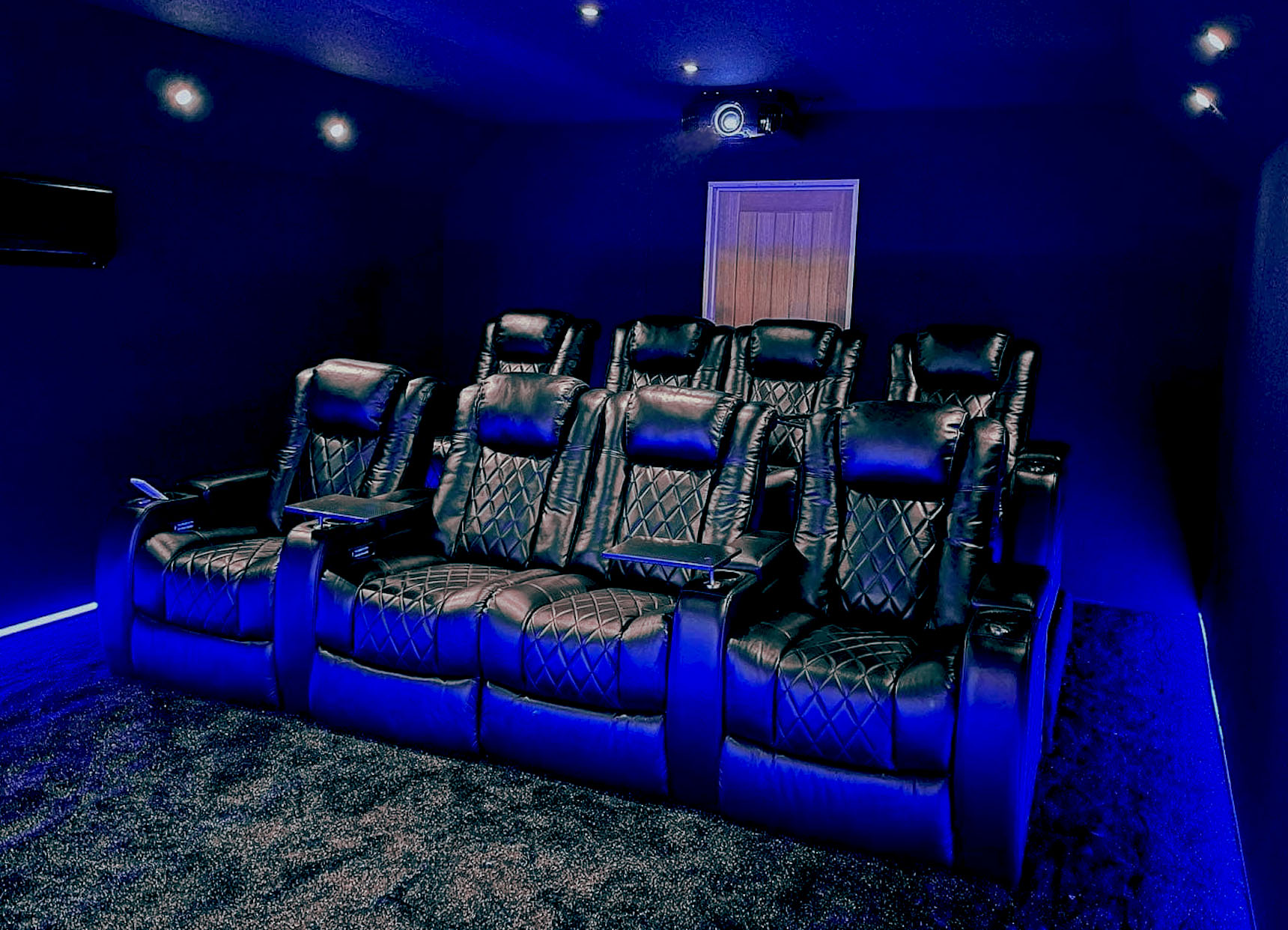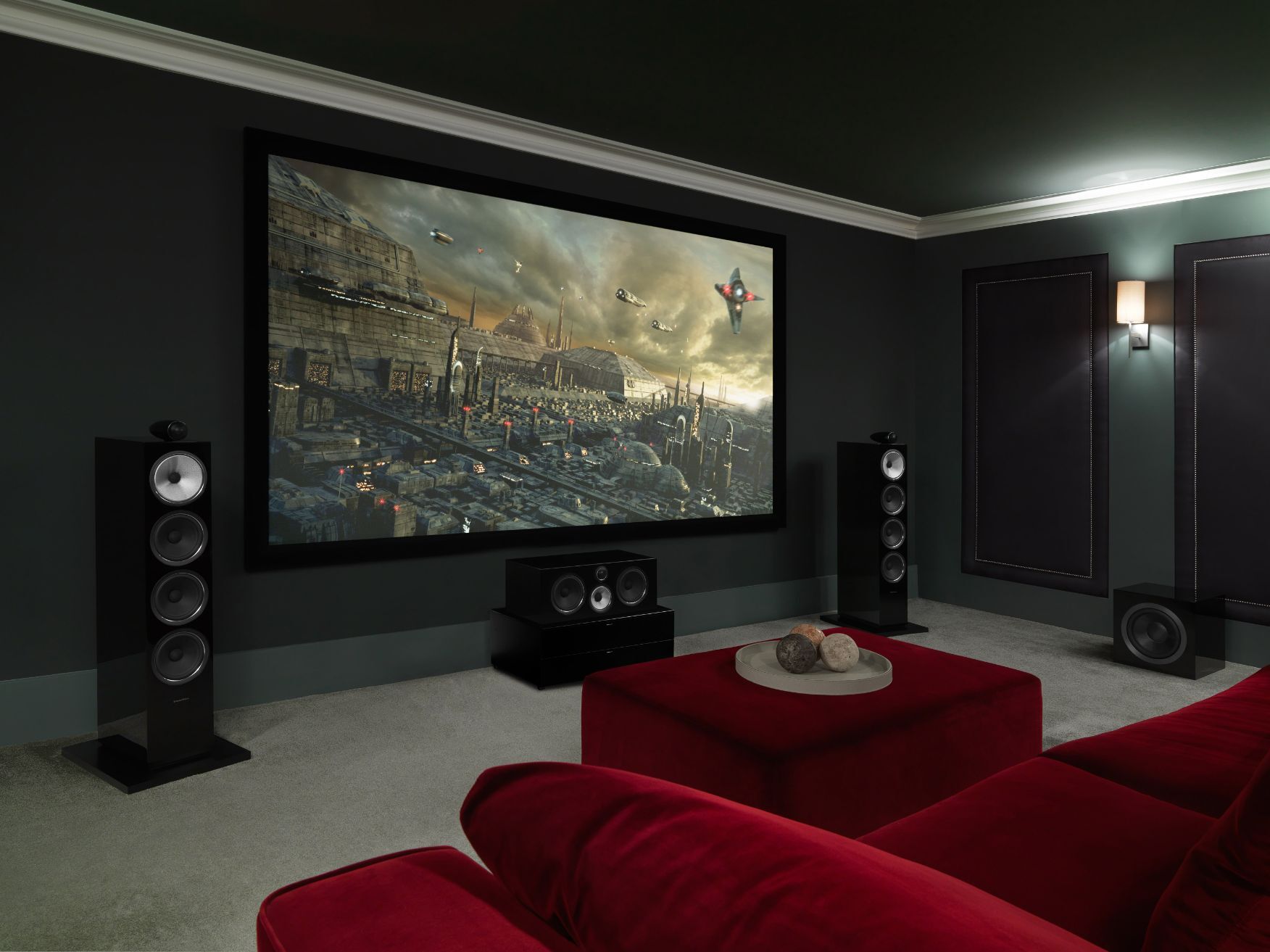The Ultimate Guide to Home Theater Installation Tampa Homeowners Rely On
The Ultimate Guide to Home Theater Installation Tampa Homeowners Rely On
Blog Article
Home Theater 101: Whatever You Need to Know for a Cinematic Experience at Home
Producing a home theater that measures up to the cinematic experience of a commercial theater involves careful consideration of several elements, consisting of screen choice, stereo, and room design. Each element plays a pivotal duty in accomplishing the desired ambiance and functionality. Whether you are contemplating the excellent display size or the intricacies of border noise, comprehending these fundamentals is vital. As we check out these crucial parts, it becomes obvious that the options made can considerably influence your overall viewing experience, leaving one to consider exactly how these decisions will certainly shape your personal cinema.
Picking the Right Screen
When setting up a home cinema, selecting the right display can make or damage the watching experience - home theater installation tampa. The screen offers as the centerpiece of your configuration, influencing picture quality, watching angles, and overall aesthetic. Key variables to take into consideration include screen resolution, kind, and size
First, determine the suitable display dimension based upon your space dimensions and seating distance. A basic standard is to sit approximately 1.5 to 2.5 times the angled display dimension for ideal viewing. Next, select between numerous screen kinds, such as fixed-frame, motorized, or retractable screens, each offering distinctive advantages. Fixed-frame displays commonly supply the most effective photo quality, while motorized options permit versatility precede use.
Resolution is an additional important variable. For a really immersive experience, think about a screen created for 4K and even 8K web content, making certain sharpness and quality. In addition, consider the display's gain, which affects illumination and comparison; a greater gain can improve illumination in well-lit areas, while a reduced gain might be better for darker settings.
Selecting Sound Equipment
Audio tools is a crucial element of any type of home theater system, substantially improving the general watching experience. The option of audio equipment can determine the deepness, quality, and immersion of noise, vital for developing a motion picture ambience.
When choosing audio tools, think about a border sound system, which normally includes a receiver, numerous speakers, and a speaker. A 5.1 or 7.1 network system is suggested, where the first number represents the speakers and the 2nd the speaker, providing an immersive soundscape. The receiver is the heart of the system, managing audio and video signals, and ought to sustain contemporary formats like Dolby Atmos for an improved spatial experience.
Quality audio speakers are essential; look for models that offer a well balanced sound account with good bass feedback. Floor-standing speakers can produce richer noise, while bookshelf choices save space. Furthermore, consider cordless alternatives for convenience of setup, although wired systems usually deliver premium performance.

Ideal Seating Arrangements
Developing a suitable home theater experience pivots dramatically on optimum seating setups. The plan of seats plays an important function in both convenience and checking out quality, straight affecting the overall motion picture experience.
First, think about the display size and checking out range. A typical standard is to position seats at a distance around 1.5 to 2.5 times the diagonal dimension of the screen. This makes certain an immersive experience without stressing the eyes.
Following, elevation is vital. The back rows should be greater than the front to stay clear of obstructions if your seats is in a tiered style. For flat seats, make sure that the front row is not also close to the display, and that every person has a clear line of sight.
In addition, consider the setup in terms of social characteristics. Group seating can enhance the communal experience, while individual seats might be liked for personal watching.

Lastly, focus on comfort with ergonomic seating that sustains extensive viewing periods. Integrating recliner chairs or supported seats can considerably improve the experience, making the home cinema a recommended destination for both home entertainment and leisure.
Lighting and Atmosphere
Efficient illumination and setting are essential elements of a properly designed home movie theater, as they dramatically influence the checking out experience. The right illumination can improve the motion picture feel, while bad options can detract from it. For ideal results, take into consideration a split illumination method that includes ambient, job, and accent illumination.
Ambient lighting offers basic illumination, making sure that the area is not totally dark, which can strain the eyes. Dimmer switches are highly recommended, permitting adjustments based on the web content being viewed. Task lights, such as wall sconces or flooring lamps, uses useful illumination for tasks like analysis or browsing the space without interrupting the total environment.
Accent lights can be made use of to highlight architectural attributes or develop centerpieces, adding deepness and passion to the room. LED strip lights behind displays or along racks can give a refined radiance that boosts the visual experience without frustrating great site the audience.

Wiring and Installation Tips
A tactical circuitry configuration is crucial for achieving optimal performance in your house cinema system. Appropriate circuitry not only guarantees high-grade sound and video clip signals but also enhances the overall visual of your area. Begin by drawing up your format, recognizing where each part will certainly be placed, including your display, speakers, and receiver.
When selecting cable televisions, prioritize premium, properly determined electrical wiring to minimize signal loss. HDMI cables should be utilized for video clip links, while speaker wire ought additional hints to match the specifications of your speakers and amplifier. Choose in-wall rated cords to abide by safety criteria and maintain a clean look.

Conclusion
In recap, developing a remarkable home movie theater experience requires mindful factor to consider of various elements, consisting of screen option, audio devices, seating arrangements, lighting, and circuitry. By prioritizing these factors, a cinematic environment can be successfully replicated, enabling for immersive seeing experiences that equal traditional cinema settings.
Creating a home cinema that equals the cinematic experience of a business theatre includes mindful factor to consider of multiple components, consisting of screen choice, audio systems, and space design.When establishing up a home theater, picking the best display can make or break the viewing experience. Next, pick between numerous display kinds, such as fixed-frame, motorized, or retractable displays, each offering unique advantages. For a truly immersive experience, consider a display designed for 4K or even 8K material, ensuring sharpness and clearness.In summary, creating a remarkable home movie theater experience calls for cautious consideration of different aspects, including screen choice, audio tools, seating arrangements, illumination, and electrical wiring.
Report this page